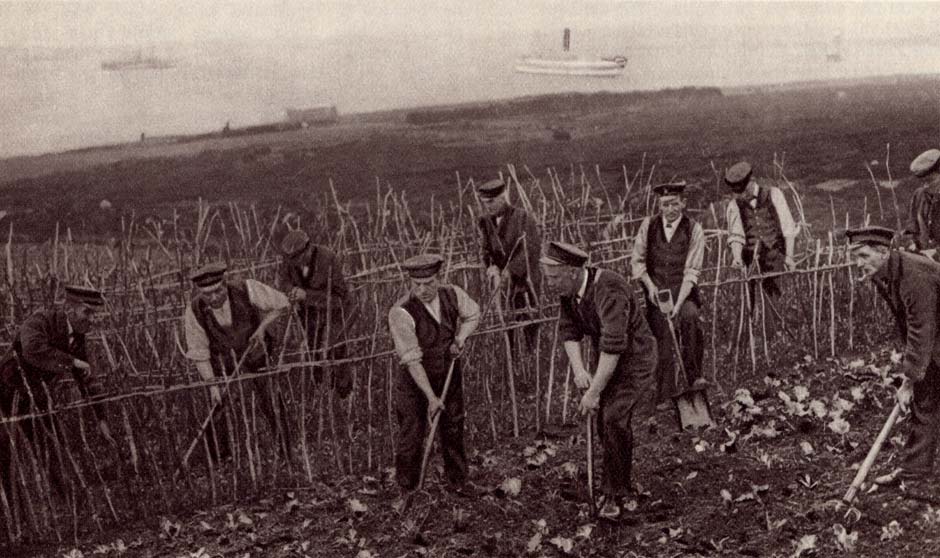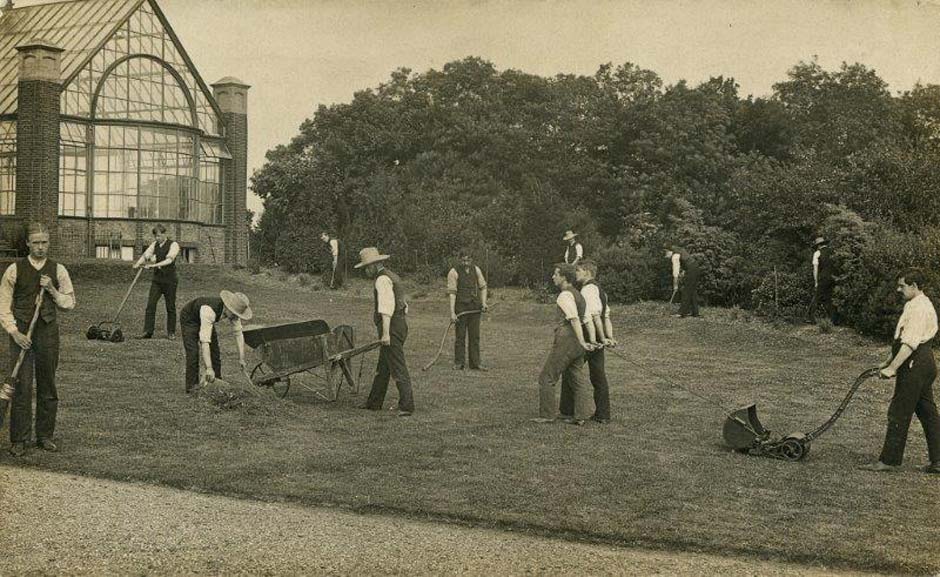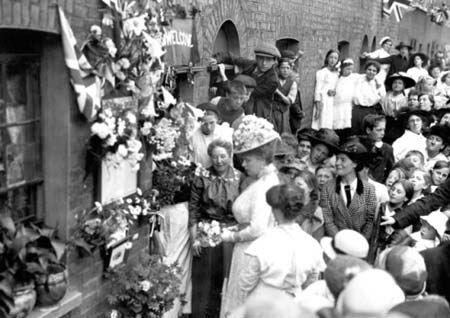Natalie Hammond finds out how battle-field gardens brought a little bit of beauty and control to the lives of soldiers serving in the trenches
 The first bomb of World War One to bruise English soil fell in the back garden of a Mr. Terson. Far from being a historic event, it did little more than shatter a few window panes and throw a gardener, called Banks, out of a tree. This is one of the century-old anecdotes that was unearthed in the process of researching the Garden Museum’s latest exhibition, Gardens and War. Others suggest that British soldiers in WWI were proud to be green-fingered, establishing allotments behind the lines to feed their battalions and cultivating every vegetable from celeriac to salsify and Jerusalem artichokes.
The first bomb of World War One to bruise English soil fell in the back garden of a Mr. Terson. Far from being a historic event, it did little more than shatter a few window panes and throw a gardener, called Banks, out of a tree. This is one of the century-old anecdotes that was unearthed in the process of researching the Garden Museum’s latest exhibition, Gardens and War. Others suggest that British soldiers in WWI were proud to be green-fingered, establishing allotments behind the lines to feed their battalions and cultivating every vegetable from celeriac to salsify and Jerusalem artichokes.
Whilst the trenches were difficult, damp and muddy places to live, flowers nonetheless flourished on the front line. The resourceful would repurpose German howitzer shells to make flowerpots and salvage wild flowers from ruined villages they marched through. A machine gunner stationed in Northern Greece pressed his collection of cuttings in 1916. These preserved stems and petals – lent to the museum by his daughter, who discovered them tucked in an envelope addressed to her mother – are evidence of a human soul cleaving to whatever beauty they could find. We ask Russell Clark, curator of Gardens and War, how two such discrete entities converged on the Western Front.
Why did the soldiers start gardening?
The soldiers needed tons of food in France, so the closer to the Front Line they could grow it, the better. They were trained by a pamphlet the army produced, which told them what to grow, how to rotate crops and how two acres could grow vegetables for 200 men. Some also made flower gardens. They wrote about going into the ruins of a chateau and rescuing wild flowers and we know a German soldier, Private Gotthold von Rohden, crawled into No Man’s Land to pick snowdrops.
The exhibition contains photographs of prisoners gardening at Ruhleben internment camp in Germany. How did that come about?
The internees started growing flowers to hide the barbed wire and brighten up the camp. The Post Office was still in operation, so they wrote to the Royal Horticultural Society asking for advice and seeds; that free exchange of horticultural information was going on throughout the war. If you were a member of the RHS, you could subscribe to its magazine. It talked about how good the harvest would be, something that would have been quite interesting if you were abroad in a country where there was going to be a shortage of potatoes. It wasn’t until 1916 that members of the Ruhleben Horticultural Society, affiliated to the RHS, started growing vegetables.
 Is there evidence that German prisoners of war were interested in gardening?
Is there evidence that German prisoners of war were interested in gardening?
We’ve got a photograph of Handforth camp in Cheshire, which shows the prisoners made a watermill and grew flowers. The RHS garden at Wisley had an Austrian who looked after its rock garden. They failed at maintaining it when the man was interned and petitioned Parliament to get him paroled. We’ve also got a set of gnomes carved out of cattle bone in the exhibition, which were whittled by a German who was imprisoned on the Isle of Man. Quite a lot of Germans stayed in England after the war; one from the Dorchester camp became Thomas Hardy’s gardener.
What would flowers have symbolised for soldiers?
Home. War poets would describe walking through a ruined garden, smelling roses and thinking of home. Gardening was also about control. The soldiers were told to do everything – you’d wake before
Below: Queen Mary visiting a flower shrine in Hackney, 1916
 dawn, go on parade, have an hour of shooting at the enemy, stop for breakfast, do chores, stand to in the evening, take up positions so you’re not attacked at night, patrol No Man’s Land, repair the barbed wire and then it was dawn again. Flowers were something they could grow and make for themselves – that little bit of beauty and colour they could control.
dawn, go on parade, have an hour of shooting at the enemy, stop for breakfast, do chores, stand to in the evening, take up positions so you’re not attacked at night, patrol No Man’s Land, repair the barbed wire and then it was dawn again. Flowers were something they could grow and make for themselves – that little bit of beauty and colour they could control.
How were flowers associated with burial rites?
When soldiers were killed and buried in a field, their comrades left a bunch of flowers as a tribute – roses or whatever wild ones they could find. At the end of the war, when ad hoc cemeteries were cleared up, they actually tried to grow plants from the homelands of fallen Commonwealth soldiers – Canadian cemeteries have maple trees and they got a plant from the Himalayas for the Indian army.
What about floral shrines on the Home Front: when did they become popular?
There was a particular street in Hackney where 77 of the hundreds who had signed up died and its residents established a communal shrine. In 1916, Queen Mary went to an East End shrine and her visit was filmed and recorded in the London Evening News. After that they sprung up all around London and became officially recognised. In 1918, Edwin Lutyens designed the official shrine in Hyde Park and 100,000 people visited in the first 10 days, laying 200,000 bunches of flowers. It was on the scale of Princess Diana and Kensington Palace. It stayed up for longer than envisaged and was turned into a permanent memorial – the Cenotaph.
The exhibition contains letters, photographs and trench art – is there an object you were particularly drawn to?
We found a remarkable book with illustrations of imaginary war plants – some contain shells or German helmets and have names like “German Culture Plant” with the subtitle “dangerous parasite mostly found in Belgium”. All we know about its author is that he ran a power company in Italy in the 1930s and died there.




